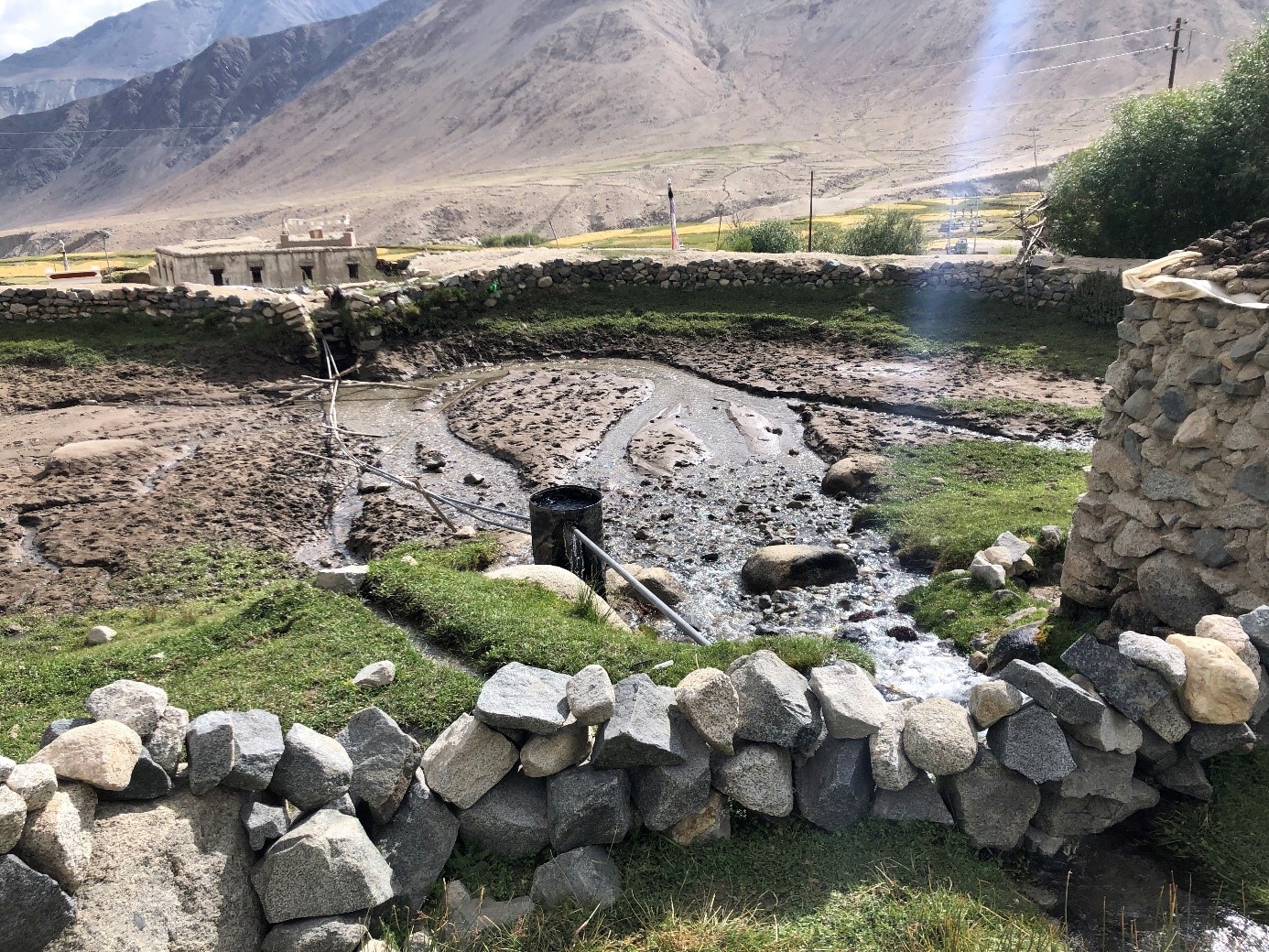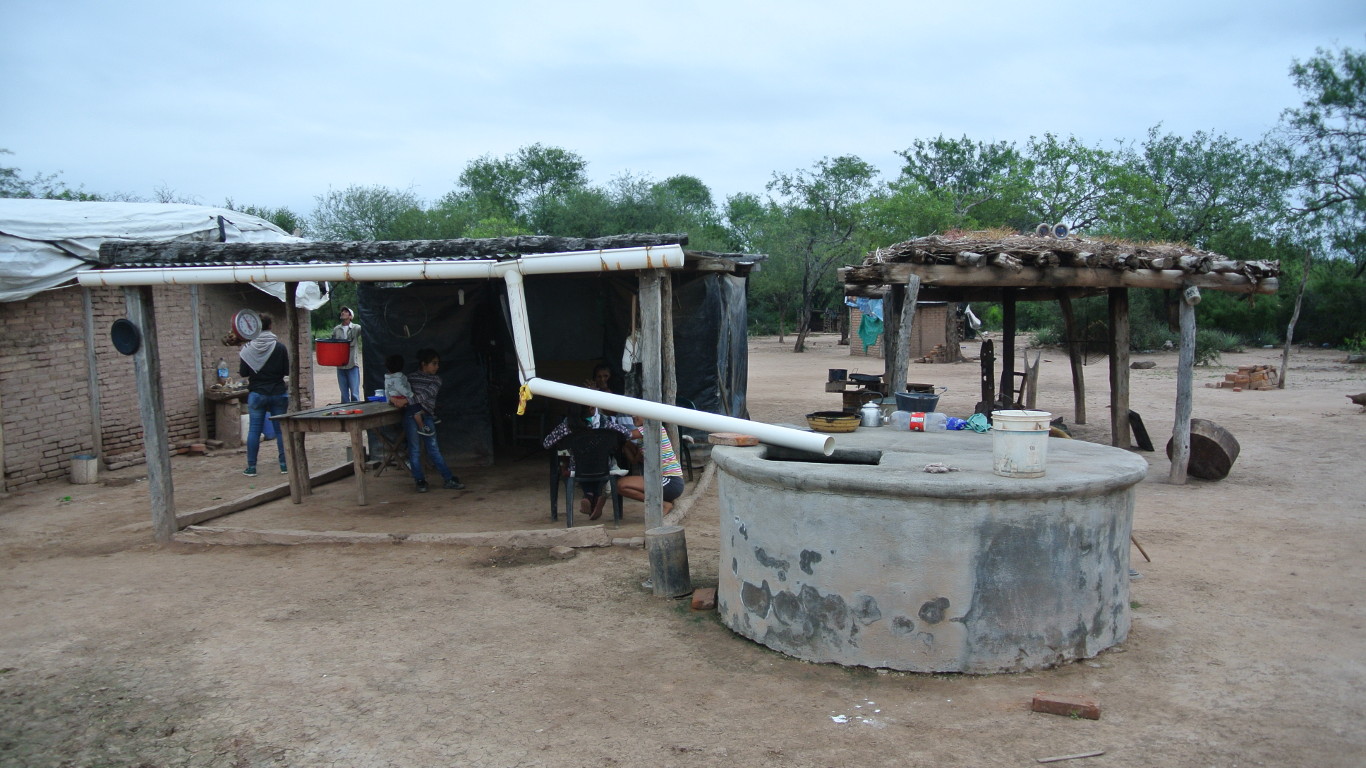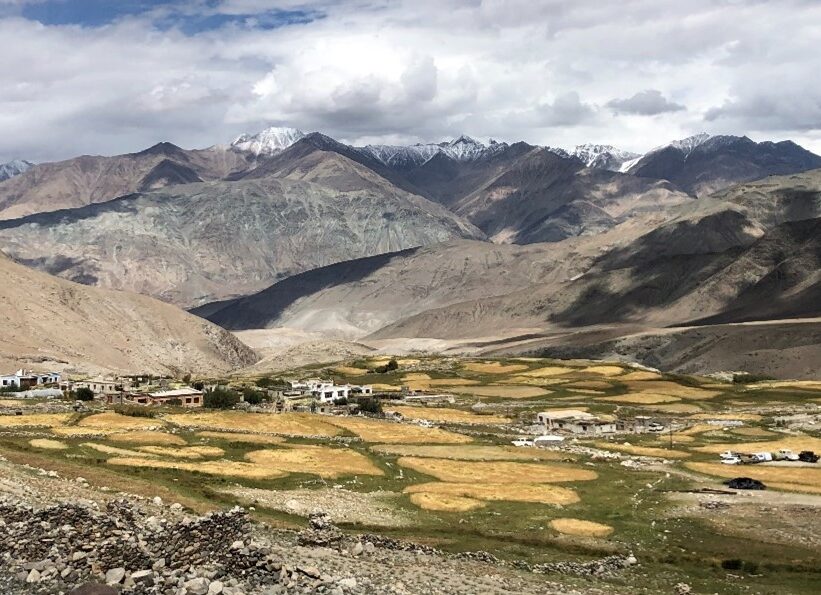Engineers Without Borders Switzerland (IngOG+), together with Himalaya Help and Care, a Luxembourg-based non-governmental organisation, and the local Navikarana, is committed to building and operating a robust system of drinking and process water supply for the mountain village of Khema in the Himalayan region of Ladakh (India). The project will contribute to mitigate the lack of water supply of the village during the critical winter months.
Project Context
The village of Khema is located at about 4,000 m above sea level in the Himalayan region of Ladakh in northern India, not far from the border with China. In winter, the surrounding streams dry up and the 150 villagers depend on a spring down the valley to meet their own water needs and those of their livestock. In 2015, a diesel-powered pump along with a plastic pipe were installed through a government funding program. The fuel provided is insufficient and the diesel regularly freezes i. e. not adapted to the local conditions. The pumps and pipes are not properly designed for the demand and maintenance is poor, so that the system is of limited use. Often, vital water must be carried up from the source in canisters over a steep and dangerous path, either by foot or with the help of donkeys, consuming a lot of time and energy. Another hurdle is the lack of collection capacity. The only reservoir is not suitable for the scarce water quantities (when the pump is working) and the cold winter temperatures. Furthermore, the preservation of the water quality is not sufficiently given, as the only water reservoir consists of a masonry, open basin. During pump operation (if possible, approx. 1-2h), all residents must go to the distribution point to fill up their water reserves.


Project scope
The project goal is to find a sustainable solution for the water supply of the villagers during the winter months. The solution for this objective consists of three distinct approaches, which together should lead to a more comfortable life for the people concerned.
- The inefficient diesel generator will be replaced by photovoltaic solar cells that will power the pump in the future. The choice of this solution is intended to enable energy independence for the water supply and to set an example for ecological pumping.
- The pumps and the plastic pipe will also be replaced with new products and their capacity increased. Since the sunshine duration during the winter months is only short, long pumping times cannot be assured. The entire daily demand must therefore reach the village within a short time. Furthermore, the pipes have been damaged by several frost cycles, explaining the need for replacement.
- Finally, a reservoir will be built inside a so-called “solar passive house”. This will allow the pumped water to be stored and give the residents a certain flexibility in drawing water. A central storage point for the water is the most economical solution due to the need to heat the water above freezing point. These sun-heated storage tanks are already applied and proven solutions in the Ladakh region for storing drinking water during the cold winter months.
Project status
The project team was able to establish valuable partnerships with the local organisation “Navikarana Trust” and “Himalaya Help and Care” with local representatives. An evaluation trip in the summer of 2021 brought many insights into the local situation and allowed helpful measurements and exchanges with the locals and are still maintained through regular contact.
The design of the system has been completed and the procurement of the required elements is imminent. A possible start of construction for the first phase is planned for the end of 2022. In the beginning of 2023 the solar panels were installed.
DONATE to the Project adding the code: IND002


